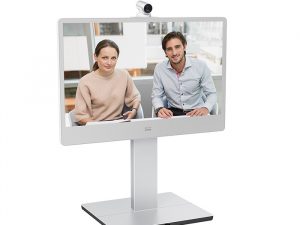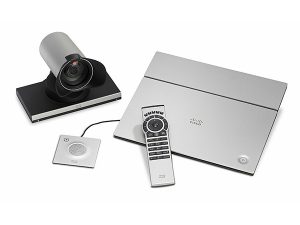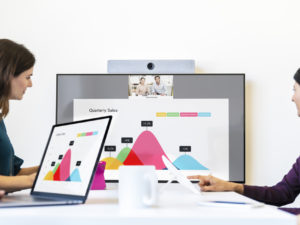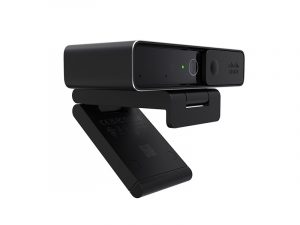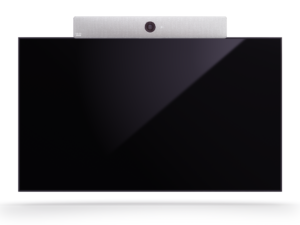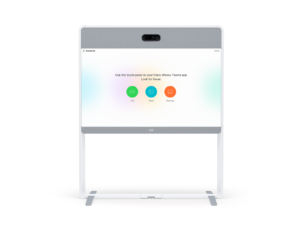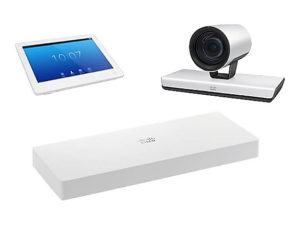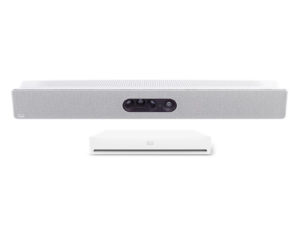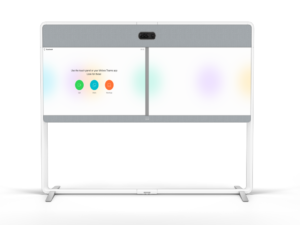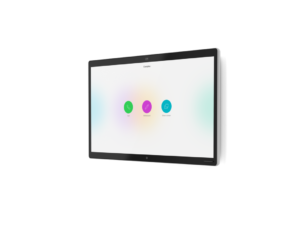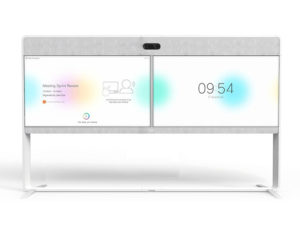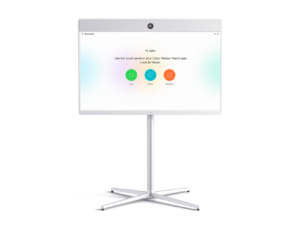The video conferencing terminal (video terminal) is the basic device included in the video conferencing system allowing the use of video conferences. During a video conference, the terminal ensures the exchange of high quality audio and video, as well as the option to send presentations. Video terminals can be connected to one another directly (so-called point-to-point connections) where only two locations participate in a video conference, or can be used to set up multi-point connections, where three or more locations communicate in a video conference. In the case of multi-point connections, a video conferencing bridge is required for communication, which can be a separate device or a bridge built into the video conferencing terminal. The main functional components of the video conferencing terminal include: video conferencing codec (terminal’s central unit), camera (or set of cameras), monitor (one or two), sound system, microphones (e.g. ceiling microphones) and a terminal control device (most often a touchscreen tablet or, less often, a remote control). The video terminal can come in two forms: as an all-in-one device, where all components are included in a single unit, or as a video conferencing set (integration set), where the codec, camera and microphones come from the video terminal manufacturer, while the monitors and sound system are from companies specializing in the manufacture of these components.
Video terminals
Read more
Video terminals fitted with built-in touch screens or which allow for integration with touch screens as part of an integration set are appearing on the market increasingly more often. Touch screens allow replacement of traditional flip charts used during local meetings and collaboration on creating a project through several locations connected as part of a video conference.
It is recommended that video terminals as central elements of conference room equipment be integrated with audiovisual systems (AV systems), lighting control systems and other systems that are part of the room’s equipment. The purpose of such a recommendation is to make the room’s operation as simple as possible from the end user’s perspective and to be accomplished using one control unit, such as the touchscreen control panel in a video terminal. With this, there is no need to use several remote controls, each of which has been designed to control a different device. This way, it is possible to use the control panel not only to set up the scheduled video conference by selecting one button, but also control the room’s lighting, blinds, projection monitors, as well as the device (source) the presentation will be displayed from, etc.
Video conferencing terminals also integrate with the company’s calendar system, the room booking system, etc., to plan video conferences from the level known to users of the MS Outlook calendar or web browser.
Cisco is a leading manufacturer of video conferencing terminals. Cisco’s offer for video conferencing terminals includes solutions for all categories of conference rooms and all types of meetings.

